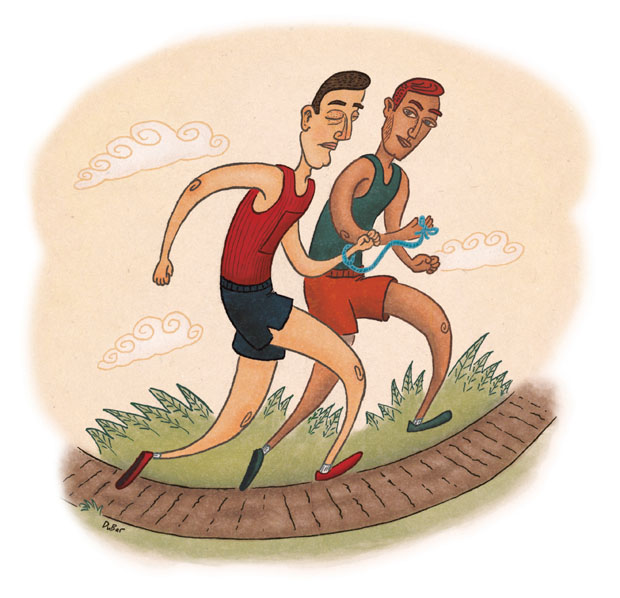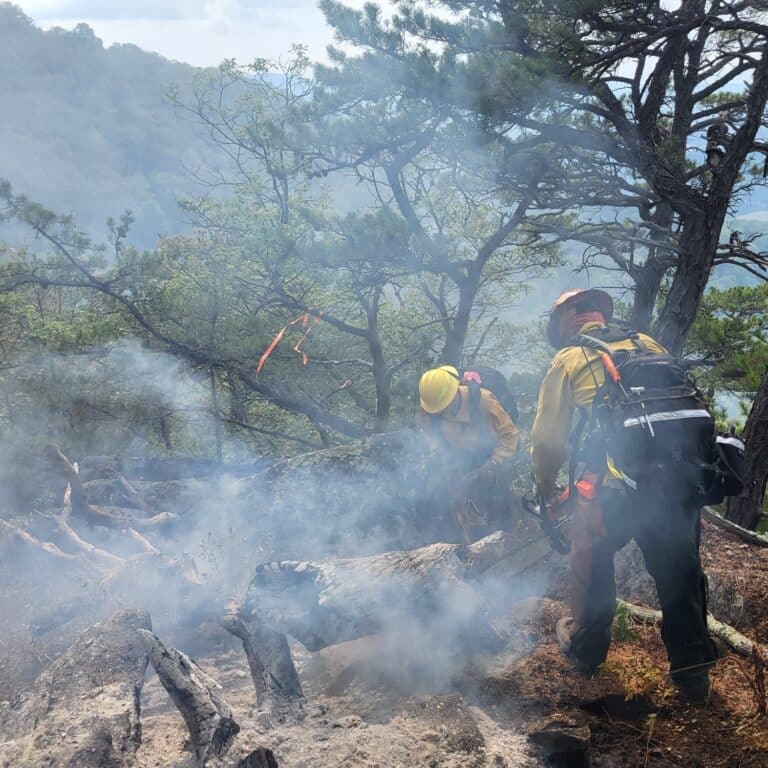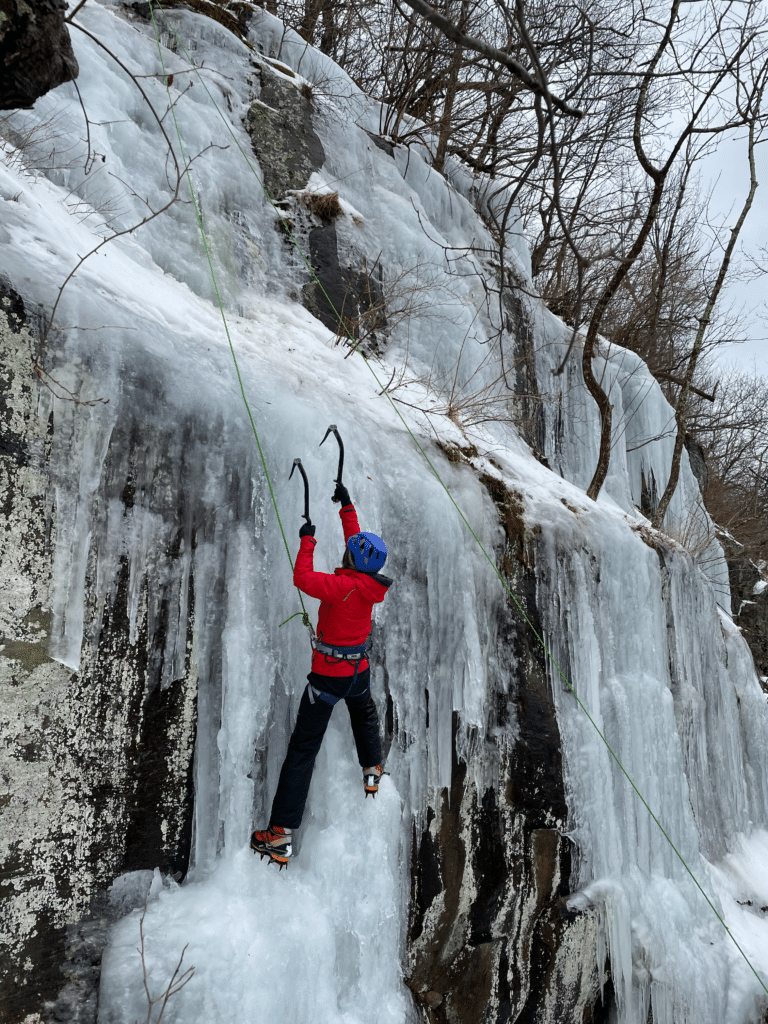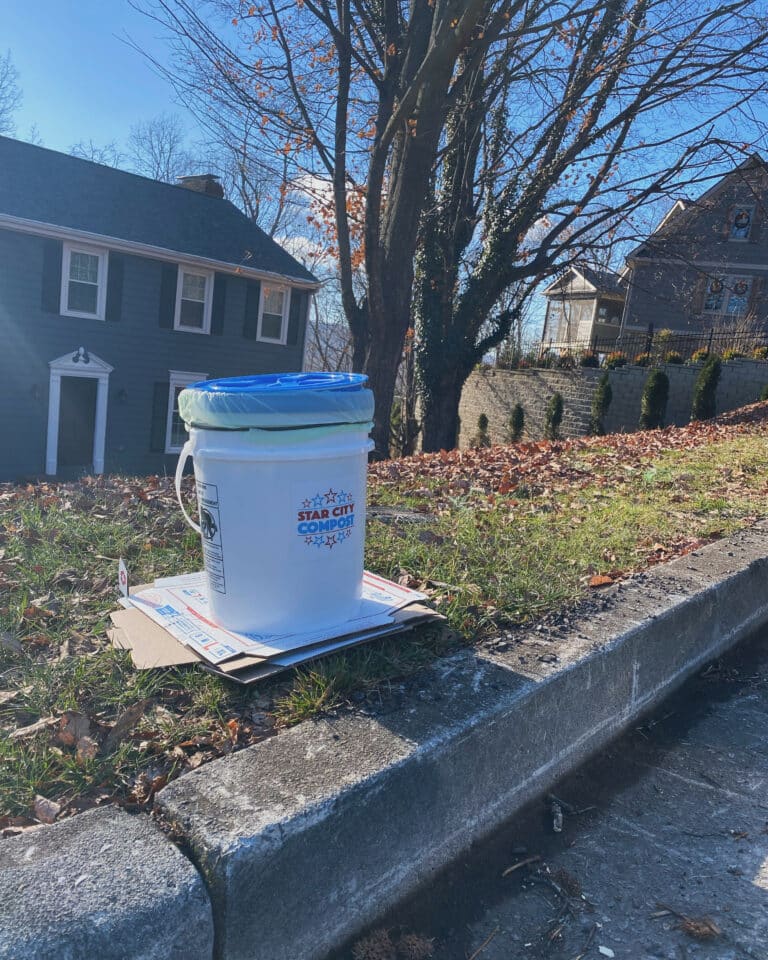Tim Willis’ life hangs by a string — a blue shoestring wrapped around my index finger. “It’s like a leash, and you’re my seeing-eye dog,” Tim says, pinching the other end of the shoelace and wiping sweat from his sightless eyes. I’m Tim’s guide runner this morning on a six-mile loop around his neighborhood. By tugging on the string, I signal to Tim which direction he needs to turn. We wind through subdivision streets for the first few miles, then cross a major four-lane highway. “Step up,” I shout, pulling the shoestring tight. Without breaking stride, Tim leaps over the cement curb and back onto the sidewalk.
Tim’s high school coach developed the shoestring technique so that Tim could run cross-country. Fifteen years later, Tim became one of the world’s fastest blind runners. Our six-mile run this morning is the first of two workouts he has scheduled for today. Tim has been consistently putting in 70 miles a week to prepare for his third straight Paralympic appearance.
“When I lost my sight, I decided that’s all I would lose — and nothing more,” he explains. As a child, he was diagnosed with Coats’ Disease, a retinal blood vessel disorder that gradually occluded his vision. By age 10, he was completely blind in both eyes.
But that didn’t stop him from wrestling in high school or running in college. He competed in Division I cross-country for Georgia Southern University and won the World 10K Paralympic Championships. He currently holds 13 national records and two world records, including a blistering 32:27 personal best in the 10,000 meters.
“Let’s pick it up a bit,” Tim says, four miles into our loop. We’re already running six-minute miles, but Tim wants a little more tempo this morning. I open up my stride and try to hang with him.
Without sight, Tim’s other senses are sharpened. He hears approaching cars several seconds before I do. He smells flowers in neighborhood yards and identifies my deodorant by brand name. He even knows when I’ve missed a turn.
“I think we were supposed to make a left on that street back there,” he observes, only a few yards after I pass it.
Tim has run this same six miles with dozens of different guides over the past 15 years. When he can’t find a guide, Tim gets in a treadmill workout or runs hundreds of laps by himself around his small, grassy front yard.
“I usually run the yard at night so my neighbors don’t think I’m crazy,” Tim says.
He holds my elbow as we cross the four-lane highway again. Once we’re back in the subdivision, I pull on the shoestring, and we veer left up a steep hill. I call out potholes, storm drains, overhanging limbs and cars parked in the road. He puts his complete trust in me — a stranger he has never seen — to guide him through the bumpy boulevards and crowded, curb-cluttered streets.
We finish the final two miles of the loop at a pretty good clip. Tim hopes the speed work at the end of his runs will improve his kick, which faltered in the final laps of the 10,000-meter run in the last Paralympics. He and a Mexican runner broke away from the pack early, and Tim took the lead midway through the race. But with six laps to go, the Mexican caught him. Tim couldn’t hold the pace in the final mile and ended up with a silver medal.
Afterward, we cool down with a few 100-meter strides at the park near his house. The basketball rims are busted, and the ball field behind the playground is now a parking lot. But Tim still remembers what the park looked like before he lost his sight. The 29-year-old runner still sees the world through a 7-year-old’s eyes.
We stride back and forth, side by side, across the old ball field. For a few seconds, I close my eyes and run in the dark with him. Instantly, I’m lost and frightened and vulnerable. It feels like I’m about to collide with a tree or a telephone pole any moment. Five seconds feels more like five minutes, and the slender shoelace becomes my lifeline. Finally I snap open my eyes, flooded now with safe, secure sunlight.
For the rest of the workout, I’m not sure who’s guiding who. Tim seems to know every contour and crevice of the field. His eyes may not work, but he still can see — with his feet, his skin, his ears, his memory. We run a couple more strides together, the blind leading the blind, the blue shoestring hanging loosely between us.
The U.S. Association of Blind Athletes is always looking for guide runners: usaba.org








